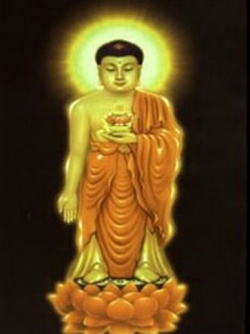The Buddhist doctrine of “self” (from Theravada to Tathagatagarbha)
By Evgueni A. Tortchinov
(St. Petersburg State University)
Russia
The Buddhist doctrine of “self” (from Theravada to Tathagatagarbha)
The anatmavada doctrine was one of the most important ideas of the primitive Buddhism which distinctly distinguished it from orthodox Brahmanism as well as from Jainism, or another religious and philosophical doctrines of the Indian origin.
In its classical form preserved in the Pali Theravada tradition it proclaims the absence of substantial eternal “self”, or atman as empirical phenomenon replacing it by five skanhas, or groups of elements (dharma) which may be understood as elementary and ever-changing psycho-physical states as well as units of description of these states. Nevertheless, early Buddhist texts said nothing about atman in its Upanishadic sense, i.e. about Universal Self beyond empirical states of consciousness. The Madhyamika branch of the Mahayana Buddhist thought developed this notion of the anatmavada doctrine in the direction of the dharma nairatmya teaching (the theory of essenceless nature of dharmas, or their devoidness of intrinsic self-being, svabhava).
Another school of the Mahayana Buddhism, Yogacara (Vijnanavada) was very interested in the problem of the sources of the empirical forms of consciousness (the sarvastivadins and sautrantikas were engaged only in the analysis of the psychical experience as such though the roots of the Yogacara approach may be found in the ideas of early mahisasakas). They developed the doctrine of the seventh (manas) and the eighth (alaya-vijnana) kinds of consciousness. Certainly, alaya-vijnana of Asanga and Vasubandhu is not atman at all but the attention to the problem of substratum of consciousness was a key to the development of some kind of the Buddhist ontology / metaphysics restoring the idea of atman in the purely Buddhist context.
The Yogacara school did not represent the homogenous and coherent unity. It seems to be possible to divide this school into three relative but different branches: 1. The “phenomenology” (or “phenomenological psychology” of Vasubandhu and Asanga; 2. Logical and epistemological branch of Dignaga and Dharmakirti; 3. Metaphysical / ontological branch of Maitreya--Asanga: a kind of the Yogacara and Tathagatagarbha synthesis represented by Asanga’s “Mahayanasutralamkara” and purely the “Tathagatagarbhist” treatise of Maitreya (according to Chinese tradition its author was Saramati) Ratnagotravibhaga / Uttaratantra (see works of Professor Takasaki Jikido).
The theory of the Tathagatagarbha was the logical and natural result of the evolution of the Buddhist Mahayana thought. It proclaimed the positive character of the Buddhist Absolute (dharmakaya, ekacitta) as non-empty (asunya) by itself. It has four good qualities” which can not be separated from it (compare with the abhidharmist dharma-theory, where the holder-dharma is the same as the quality held by it, unlike the substance of the Brahmanists, which is absolutely different from its qualities): nitya (eternity), sukha (bliss), atman (self; essence) and subha (purity). The Yogacara--Tathagatagarbha synthesis marked the climax of the development of metaphysical trend of the Buddhist thought (Lankavatara sutra, Mahayanasutralamkara and probably Chinese compendium of this synthesis known as Mahayana sraddhotpada sastra ¤j ј °_ «H ЅЧ ). Certainly, it is absolutism but specifically Buddhist one, the absolutism preserving the main Buddhist approaches and features. Does it contradict to the classical anatmavada doctrine? I suppose, definitely no. The classical anatmavada proclaimed the skandhas instead of atman as empirical reality. The Tathagatagarbha doctrine proclaimed the Atman behind skandhas as super empirical absolute reality attainable only in the state of enlightenment / awakening (making in the same time the nature of every kind of consciousness as semsnyid in rdzogs-chen, or fo xin ¦т ¤Я in Chan БI ©v ).
The historical fate of the Tathagatagarbhist absolutism was different in India and another regions of the Mahayana Buddhism. The most remarkable event in the history of this doctrine is its exclusive prevalence in the Chinese and Far Eastern Buddhist schools where the Tathagatagarbha doctrine became the core of such schools as Tiantai ¤С Ґx ©v , Huayan µШ ДY ©v and Chan БI ©v .
Evgueni A. Tortchinov
pr. Entuziastov 56-96,
St. Petersburg 195030,
Russia
or
Faculty of Philosophy,
St. Petersburg State University
Mendeleevskaya liniya, 5,
St. Petersburg 199034,
Russia
e-mail: etor@infopro.spb.su
fax: (7) (812) 5214548 c/o Mr. S.Vatman
tel. (7) (812) 5262947

